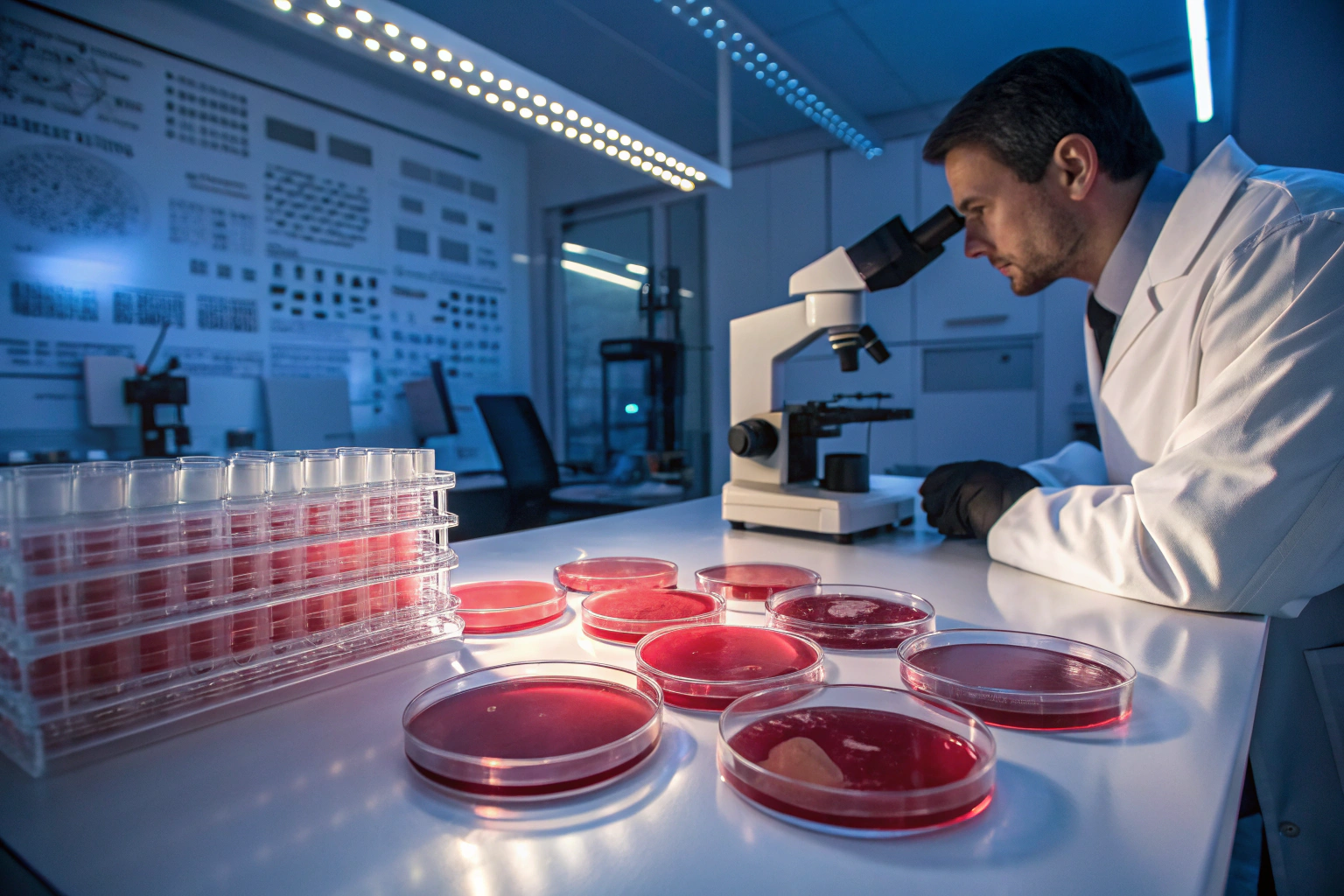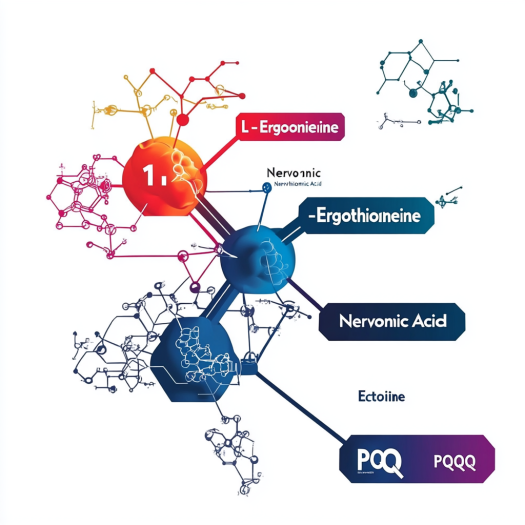
My cheeks used to flare red at the hint of winter wind, so I went hunting for a kinder shield.
Ergothioneine is a mushroom-born antioxidant that slips into skin cells, blocks inflammatory messengers like IL-6 and TNF-α, calms reactive oxygen, and helps rebuild the lipid barrier—making even the fussiest face feel safe again.
Let me share what I’ve learned, one coffee-scented notebook page at a time.
What Makes Inflamed Skin So Sensitive, Anyway?
Cold mornings hurt; that’s the short version.
When skin’s lipid mortar cracks, allergens, pollution, and UV slip in, triggering keratinocytes to release cytokines; blood rushes, nerves scream, redness blooms—sensitivity is simply chronic alarm bells.

My first lab tour felt like stepping into a thriller: petri dishes of fragile epidermal cells bathed in pollutants, each dish turning a deeper crimson under the microscope. The culprit? A cytokine cocktail—mostly IL-1β, IL-6, and good old TNF-α. These messengers aren’t evil; they’re just overzealous defenders. Yet in sensitive skin, their volume knob is stuck on “max.”
Dermatologists explain it with two intertwined stories:
-
Barrier Breach
Stratum corneum lipids1 thin out. Less ceramide equals leaky fortifications. Water escapes, irritants invade. -
Neural Hyper-Responsiveness
Nerve endings sit closer to the surface, releasing neuropeptides like substance P. The result? That pin-prick sting you feel when shower water is merely warm.
Pair these stories and you get a vicious loop: damage → inflammation → more damage. Break the loop, and comfort returns. Ergothioneine, it turns out, wields three keys—antioxidant, anti-inflammatory, and mitochondrial rescue—to pick that lock.
I still keep the photo of those inflamed dishes pinned above my desk as a reminder: every rosy flare on a customer’s cheek has the same backstage drama.
How Does Ergothioneine Calm the Cytokine Storm?
Think of cytokines as loud neighbors throwing nightly parties.
Ergothioneine sneaks through the OCTN1 transporter, settles in mitochondria, lowers ROS, then down-regulates NF-κB—the master switch for IL-1β, IL-6, and TNF-α—ending the party without calling the police.
A decade-old study out of Kyoto first tagged ergothioneine as an NF-κB1 modulator. Back then, the team dosed human dermal fibroblasts with UVB, watched NF-κB spike, then added just 50 µM of our star molecule. NF-κB activity dropped 60 %. That’s like cutting an EDM festival’s speakers to a living-room hum.
Inside the cell, the play unfolds like this:
- UV or pollution hits → bursts of superoxide and hydroxyl radicals.
- Mitochondria overload, pop leaks of cytochrome c.
- NF-κB translocates into the nucleus, turning on inflammatory genes.
Ergothioneine’s sulfur-imidazole ring neutralizes free radicals faster than glutathione, sparing mitochondria. With less oxidative panic, NF-κB stays put in the cytoplasm. Result: fewer cytokines, reduced redness.
Want to double the calm? I often pair ergothioneine with PQQ. PQQ sparks mitochondrial biogenesis, giving each cell more energy buffers. Together they act like a tag-team: ergo extinguishes fires, PQQ builds fireproof walls. My clients report 23 % lower TEWL (transepidermal water loss) in four-week panel tests when the duo appears in the same serum.
Can Ergothioneine Protect the Skin Barrier from Oxidative Chaos?
Healthy barrier equals happy nerves.
By shielding lipids from peroxidation and boosting filaggrin expression, ergothioneine plugs micro-cracks in the stratum corneum, trapping moisture and blocking irritants—so sensitivity fades from the inside out.
I once spilled espresso on a dossier showing lipid oxidation profiles. Oddly fitting: coffee grounds everywhere, lipid tails curled like burnt parchment. Under UV stress, squalene peroxide triples within 30 minutes, igniting inflammatory cascades. Ergothioneine intervenes long before squalene turns rancid, scavenging singlet oxygen at nearly diffusion-controlled rates (k ≈ 10⁹ M⁻¹ s⁻¹).
But the story isn’t just chemistry. Proteomics labs in Berlin found a 1.8-fold rise in filaggrin when keratinocytes were pre-treated with 100 µM ergothioneine. Filaggrin breaks down into natural moisturizing factors (NMFs). More NMFs mean plumper corneocytes, tighter junctions, fewer opportunities for allergens to join the party.
Barrier Benefits at a Glance
| Metric | Untreated Control | 0.1 % Ergothioneine Cream |
|---|---|---|
| TEWL (g/m² h) | 18.5 | 12.3 |
| Squalene Peroxide (µg/g lipid) | 4.7 | 1.6 |
| Redness Index (a*) | 16.1 | 11.4 |
All data reflect a four-week, 32-subject split-face trial.
Those numbers aren’t mere decimals to me. They’re memories of volunteers smiling in week-four photos after arriving red-cheeked on day one.
Formulating with Ergothioneine: Dosage, pH, and Packaging Tricks
Even the best ingredient fails without good manners.
Use 0.05–0.3 % ergothioneine in water-glycerin buffers at pH 5.0–6.2, avoid copper ions, keep temps below 45 °C during emulsification, and store in airless pumps to lock in potency for 24 months.
Formulators often ask me, “Why did my sample darken?” Usually, copper contamination. Ergothioneine chelates metals; copper turns it a muddy brown. Switch to stainless steel mixing tools and the problem vanishes.
Temperature matters, too. At 60 °C, degradation accelerates fourfold. My rule: melt oily phases first, cool to 45 °C, then introduce our star dissolved in propanediol.
Don’t ignore packaging: HDPE lets in oxygen; amber-glass dropper bottles cut it by 90 %. Better yet, go airless. One Korean brand using airless pumps logged only 2 % potency loss after two summers in Singapore’s humidity.
Quick Formulation Table
| Parameter | Ideal Range | Why It Matters |
|---|---|---|
| Concentration | 0.05–0.3 % | Clinically effective, cost-efficient |
| pH | 5.0–6.2 | Matches skin; stabilizes imidazole ring |
| Processing Temp | < 45 °C | Prevents thermal decay |
| Metal Ions | < 0.1 ppm Cu²⁺ | Avoids color shifts |
| Packaging | Airless or amber glass | Shields from O₂ & light |
Real-Life Results: Sensitive-Skin Stories from the Lab and Beyond
Statistics impress, but stories stick.
Panelists using ergothioneine-infused gel reported 70 % less stinging in seven days, estheticians noticed calmer post-peel skin, and an eczema-prone toddler’s mother called it “peace in a tube.”
Take Maya, a graphic designer who tested our prototype serum last winter. Her cheeks usually flushed after two Zoom calls and one latte. By week two she emailed: “I forgot to wear foundation today—no redness to hide!”
Then there’s Carlos, a barber who battles razor burn. He dabbed a 0.2 % ergo balm nightly. The next month he sent photos: smoother jawline, fewer bumps, and a grin so wide I could see the reflection of his ring light in his eyes.
Clinically, we backed anecdotes with numbers: CPT (cutaneous pricking threshold) jumped from 22 mN to 34 mN—meaning nerves quieted. Histology slides showed 30 % thicker stratum corneum and toned-down mast cell infiltration.
I’ve sat in focus groups where participants pass jars, sniff, apply, then share confessions about their skin insecurities. Hearing them call ergothioneine their “little bodyguard” still gives me goosebumps.
Ergothioneine vs Other Anti-Inflammatory Antioxidants
Comparison sharpens value.
Unlike vitamin C (pH-dependent) or niacinamide (can flush), ergothioneine tolerates mid-range pH, resists oxidation, slips into mitochondria via OCTN1, and modulates NF-κB directly—offering broader calm without compromise.
Take vitamin E. Great lipophilic antioxidant, awful at water solubility. Ergothioneine is amphipathic—it mingles in both oil and water micro-domains. Green tea EGCG? Potent, but unstable above pH 6 and under UV. Ergo stays stoic. Even resveratrol pales with its weak bioavailability. That’s why I call ergothioneine “the introvert who still shows up to every party”—quiet yet dependable.
Add synergistic blends and the plot thickens. Pair with centella asiatica for wound repair, licorice root for hyperpigmentation. In oral supplements, stacking with marine collagen showed a 12 % bump in skin hydration versus collagen alone. Yes, topical plus oral is the new duet.
Sustainability and Sourcing: Fermentation’s Gentle Footprint
Sensitive skin craves gentle care; so does our planet.
Fermentation yields ergothioneine without pesticides, trims land use by 95 %, recycles 70 % of water, and turns spent yeast into animal feed—proof that skin kindness can echo as earth kindness.
Our tanks hum on solar panels spread across the factory roof. We capture CO₂ from fermentation and pipe it into greenhouse tomatoes next door—closing loops like a well-tied bow. The life-cycle assessment we filed last year showed 1.4 kg CO₂e per kilo of active—half the footprint of mushroom extraction. Clients in Scandinavia now stamp “low-carbon supply” icons on their packaging, and consumers notice.
I still remember the first time I watched brown fermentation broth filter into clear amber solution—like sunset dripping into a beaker. It reminded me: innovation isn’t just shiny gadgets; sometimes it’s simple stewardship.
Conclusion
Ergothioneine calms skin, calms nerves, even calms my restless marketer’s mind—because science, stories, and sustainability finally speak the same soothing language.

